Care
All sub-varieties of "Cordana" roses are quite demanding in their care, requiring special conditions. When growing a flower at home, many important factors must be taken into account and a number of mandatory procedures must be followed.

Accommodation
Immediately after purchase, the plant must be washed with warm water and sprayed with a solution from pests. It is better to place a flower on windows facing south or south-west, and it must be done in such a way that in the daytime it is moderately shaded by other plants. Exposure to direct sunlight, especially in summer, is unacceptable. The recommended air temperature is +15.20 degrees.

Watering
Rose "Cordana" needs weekly watering with warm, settled water. When using cold tap water, the plant can get sick with powdery mildew - a disease that will be very problematic to cure. Watering should be quite abundant, with the obligatory removal of excess liquid from the pot. Otherwise, the rose may not bloom. In the summer, the plant needs a little more frequent watering, the need for which is determined by the dried upper layer of the earth. During watering, it is recommended to lightly loosen the soil, providing oxygen to the roots of plants and improving air exchange.

Top dressing
The application of mineral and organic fertilizers is carried out twice a year, taking into account the growing periods of plants: during flowering and the appearance of ovaries, feeding is not done. The best time for feeding is spring and autumn. In the spring, it is performed before flowering, and the main emphasis is placed on nitrogen-containing fertilizers. They contribute to the abundant growth of the green mass and activate flowering.
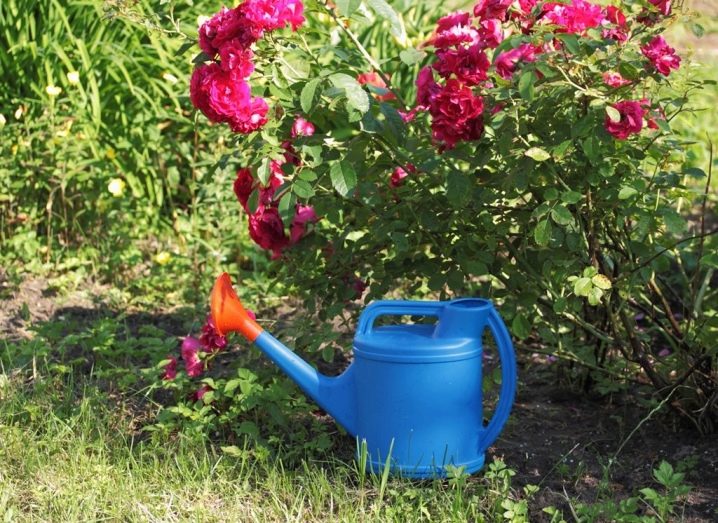
In the autumn, after the mini-rose has faded, potassium-phosphorus preparations begin to be added. They support the rose in the cold period and help it to endure the winter well. The introduction of such drugs as "Epin" and "Kornevin" gives excellent results. The first stimulates the growth of the aerial part, and the second helps to strengthen the roots. In addition, for indoor cultivation, it is recommended to ventilate the room more often, thereby ensuring a constant flow of fresh air. However, drafts should not be allowed.
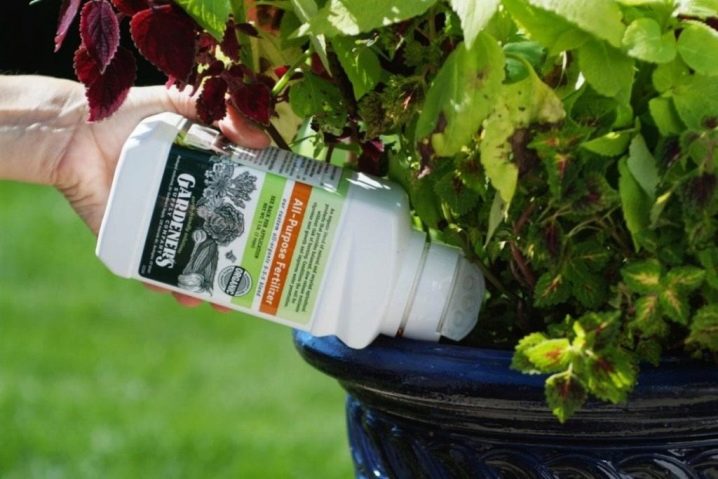
Winter preparation and care
After heating appears in our apartments in mid-October, and the daylight hours become noticeably shorter, our rose clearly begins to mope. Flowers bloom underdeveloped, their number is sharply reduced, and leaves fall near the bush. The best we can do during this period is to give the rose a rest. To do this, in November, watering is slowly reduced to 1-2 times a week, the bush is cut off and sent to a cool room with a temperature of 5-8 ° C until February. Such a place can be a loggia, a basement, a cool storage room or a glazed balcony.
J. Tadeusz: “The main problem is dry air, especially in winter, when the plant must hibernate. The place should be sunny, well lit, but not in direct sunlight. In winter, the main problem for indoor roses is central heating. It is best to reduce watering for the winter and put the rose in a bright and cool place. The air temperature should be from 15 to 24C. Light in room conditions can be sorely lacking. To do this, you can use fluorescent lamps or special phytolamps. If it is not possible to highlight the plants, then it is best to lower the air temperature even more, to ten degrees, in order to completely slow down the development of the plant.To maintain air humidity, you can periodically spray the air next to the roses without splashing on the leaves themselves. To avoid fungal diseases. You can generally arrange real natural conditions for the plant by sending it into a deep sleep, gradually reducing watering to a minimum and lowering the temperature of the content to 0C. The plant will shed its foliage and after that it will not need light at all. "
In February, the rose is transferred to a permanent place, and the rose usually shows its readiness for this with swollen buds.
The first time is very carefully watered, accustoming to constantly wet soil
J. Tadeusz: “In the summer, it is optimal to take the rose out into the fresh air, it’s good if you have a balcony. Better yet, take her to the garden, to the dacha and leave her there for the entire summer period. For roses, fresh air will be ideal conditions for good development and flowering. "
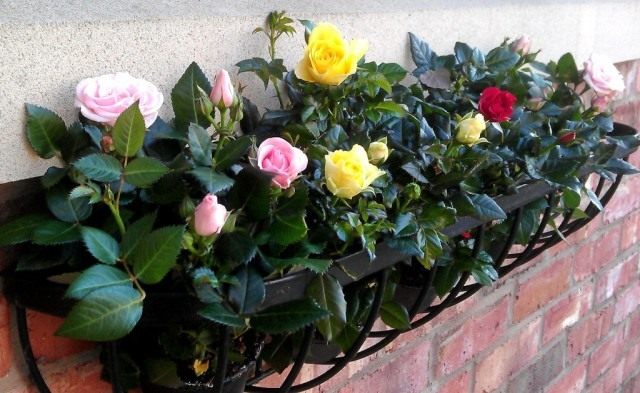 Roses on the balcony
Roses on the balcony
Rosa, of course, is a girl with a rather capricious temperament - she suffers after changing her house, she can get sick for no reason, she will not forgive us for dry soil through inattention. And he will show his cool temper, throwing off every single bud and flowers. But she sleeps for 3 months, and blooms for 7 months a year. Frankly, this is a flower for selfless, tireless lovers of beauty, who begin their day with a raid on all windows with flowers and end it with the meditative pleasure of admiring their plant treasures.
Source - GreenMarket Blog
Conditions for growth
As already mentioned, Rosa Cordana is a capricious and difficult plant to care for, which means it requires special conditions for full and proper growth. It is necessary to follow all the instructions of specialists so that the flower does not get sick and pleases its owner with beautiful flowers throughout the summer. So, for growth you need the following:
- Enough light. Like all roses, this variety requires a lot of sunlight. It is best to place the flowerpot on a windowsill that is sufficiently lit throughout the day and faces south. If the windows face the north side or the climate is not warm enough, you can purchase fluorescent lamps with ultraviolet light, which will be very useful not only for Rose, but also for other plants.
- Comfortable temperature. Experts believe that for the plant to grow properly, the temperature should not fall below 15 degrees Celsius and rise above 19 degrees.
- Fresh air. The development of the rose is beneficially affected by a sufficient amount of fresh air in the room, so it must be regularly ventilated. The main thing is to make sure that it is not blown by the cold wind - drafts can negatively affect the development of the Rose.
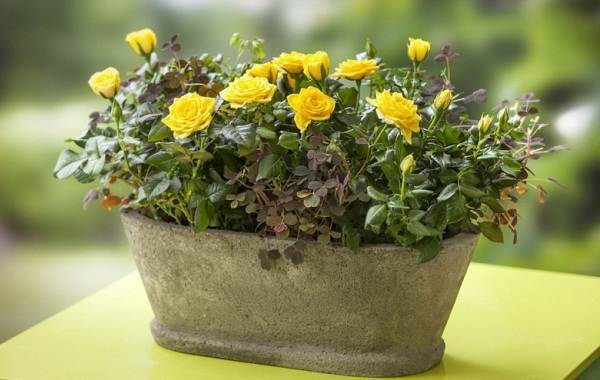
Rose Cordana feels great in a pot at home
Humidity. For a rose to grow properly, a high level of indoor humidity is required. This can be achieved if a humidifier is installed in the room, or it is simply enough to regularly spray the leaves from the spray bottle.
It is important that the water is warm, not cold. Watering
As with all plants, you need to observe the measure here. The roots of the plant should not dry out from lack of liquid, but water stagnant in the pot also negatively affects growth.
Transfer
Usually the mini-rose "Cordana" is sold in small pots, which requires transplanting it into a different environment. This is due to the fact that many manufacturers literally stuff the earthen mixtures with various fertilizers, which gives the plants a presentable presentation. However, it is contraindicated for a flower to stay in such conditions for a long time: the supply of nutrients quickly dries up, and the young bush will become cramped in a small pot. Therefore, the procedure for planting a plant in a permanent place is a mandatory event, it should be performed immediately after purchase.
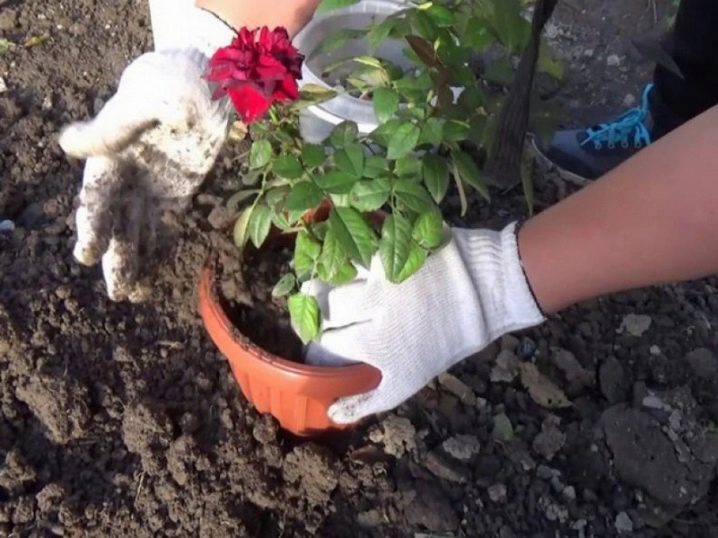
Before you start planting a plant in a new place, you need to purchase a full-size plastic pot with a volume of 1.5-2 liters, equipped with a drainage compartment and holes for draining excess liquid. A drainage mixture should be placed at the bottom of the pot, which can be expanded clay, and soil should be poured on top. You can buy it in a specialty store or prepare it yourself by mixing garden soil, sand, compost and peat in a 2: 2: 3: 1 ratio.
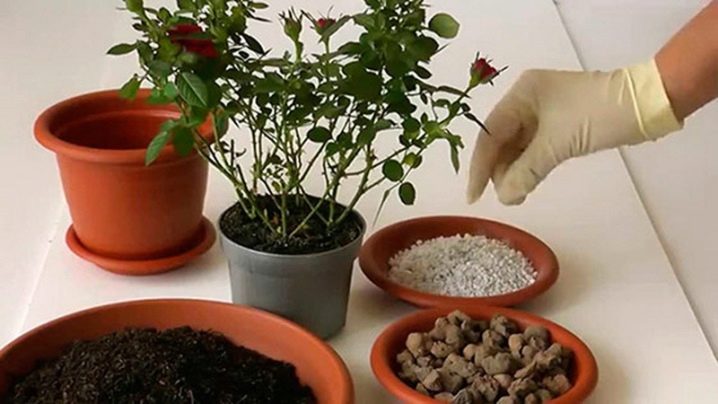
The process of planting a plant is as follows: first, all the stems on which there are flowers are removed from the shoot, and the remaining ones are shortened by a third. Then the rose is removed from the transport pot along with a lump of earth, and the roots are carefully examined. If rotten or suspicious processes are found, they are immediately removed, and the sections are disinfected with crushed coal or green stuff. Next, the plant is planted in a pot, watered with a diluted fungicide or a weak solution of potassium permanganate. The planted rose is removed for 2-3 days in a dark place, after which it is placed on the windowsill and full care begins.

Flowers are planted in open ground in spring, after the top layer of the earth warms up to +10 degrees, or in autumn. The optimal conditions for "Kordana" are moisture-permeable, slightly acidic and neutral soils. Planting a rose in the garden is not much different from planting in pots and is carried out in the same way. The only condition is the growth of the shoot: it should not be less than 30 cm, otherwise it will be difficult for the flower to cope with aggressive environmental factors, and it will die. The plant should be planted in abundantly watered soil during daylight hours and in the absence of rain and wind. Whichever way the plant is planted, it is recommended to do this when the moon is growing, but the treatment from pests, on the contrary, is better done when the moon is waning.

Plant care outdoors and at home
Cardan rose how to care after purchase
Mini rose - delicate flower
To preserve its aesthetic properties for a long time, it is important to know how to care for the Cordana rose after purchase.
Immediately after purchase, the flower must be washed in warm water. Contrary to the recommendations of some experts, one should not rush and immediately transplant the rose from a temporary pot into a permanent container or open ground: when moving to a new place of residence, the flower has already experienced stress, so Cordana needs to be provided with peace at least for a few days.
The transport pot can be put in a sunny place for now (for example, a windowsill on the south side or a balcony), while you need to moisten the soil according to the irrigation regime and for a while refuse feeding.
Note! The room should be well ventilated, but it is advisable to exclude drafts. Cordana loves good watering - every week in winter, even more often in summer
The potted soil or open ground around the stem should not dry out. At the same time, the other extreme should be avoided - it is not necessary to moisten the substrate too much, otherwise the roots will start to rot, and the plant will have to be urgently "reanimated". Dry top layer serves as a signal for watering
Cordana loves good watering - every week in winter, even more often in summer. The potted soil or open ground around the stem should not dry out. At the same time, the other extreme should be avoided - it is not necessary to moisten the substrate too much, otherwise the roots will start to rot, and the plant will have to be urgently "reanimated". The dry top layer serves as a signal for watering.
According to the general rule of floriculture, water that does not stay in the pot and flows into the pan must be removed, otherwise the microclimate in the container will become too humid. Delicate spraying of leaves is allowed. On the street, the land in the flowerbed needs to be loosened when watering.
For rose Cordana, the soil is prepared as follows:
- put expanded clay or granules of other drainage material on the bottom of the pot to a height of about 4 cm;
- pour a layer of the main soil on top - this can be a ready-made nutritious soil for the growth of the root system (brands popular among rose lovers are Pokon, Greenworld).

Expanded clay as drainage is suitable for most indoor plants
During the period of active flowering, roses are not fertilized. Instead, in early spring, nitrogen-containing top dressing is introduced into the pot or open ground, and in the fall, after the buds have fallen, the plants are fed with fertilizer with potassium and phosphorus (potassium sulfate, potassium nitrate, potassium nitrate, superphosphate).
In floriculture, a common fertilizer containing all of the above substances is azofoska - a complex feeding in the form of granules. The shares of the three active ingredients - nitrogen, potassium and phosphorus - are approximately equal. Since the fertilizer is packaged in large bags, it is beneficial to use it for summer cottages and gardens.
Important! It is potassium that contributes to the formation of beautiful buds. In a planned mode, potted plants are transplanted in the spring, as a last resort, at the beginning of summer.
During the active growing season (until about mid-autumn), it is not recommended to disturb roses
In a planned mode, potted plants are transplanted in the spring, as a last resort, at the beginning of summer. During the active growing season (until about mid-autumn), it is not recommended to disturb the roses.
Before the procedure, the substrate must be moistened, allowed to dry out a little, after which the earthen lump is taken out and placed in a new pot, the diameter of which is 3-5 cm larger than the previous one. Fresh soil must be poured around the lump and loosely tamped - the roots must "breathe".
At the first transfer, it should be remembered that store suppliers often place more than one plant in one pot - this is how they achieve the splendor of the bush. It is better to plant them separately so that the leaves are not crowded, and waterlogging does not occur in the lower part of the stem - a favorable environment for the fungus.
Pruning is usually done in the off-season. In the spring, they get rid of dry stems and twigs: they not only spoil the appearance of the plant, but also interfere with the development of fresh buds. In the fall, you can re-clean the bush, remove yellowed leaves, cut off wilted buds.

Pruning is an important ritual
In winter, roses may lack sunlight, especially if the house lacks windows facing south, southeast. In this case, you need to think about installing a fluorescent lamp. If Cordana experiences light starvation, the buds in the spring can not wait.
Growing and care
Loading …
You need to purchase ceramic pots covered with glaze or plastic for a rose, so it will be easier to care for a rose in a pot at home and grow it. The diameter of the pots should be at least 12-15 cm or more, so that the flowers of the plant look better, and the roots have more space.
Correct lighting
Indoor rose is classified as a decorative flowering plant. And although she loves sunlight, she overheats in direct sunlight, and this should not be allowed. On windowsills on the east or west side, under the glancing rays of the sun, it will feel good. If in summer it is on a balcony or terrace, then in places shaded from the direct sun.
Temperature
At a temperature of 20-25 ° C in summer, you need to make sure that the bush does not overheat, the earth and the plant itself do not dry out. In winter, the rose rests, so it is placed in a room whose temperature will not be higher than 10-15 ° C. There should be no cold drafts, small fluctuations in temperature during the day are allowed.
Humidity
The plant feels good in humid air, so it is sprayed with a spray bottle every 2 days. At the same time, the air around the bush is also humidified. If the place for the rose is chosen cool, then spraying is not carried out or performed 1-2 times a week. The dust from the leaves is washed off with a short shower. In sunny weather, it is better not to spray water on the flowers.
Watering
Caring for a home rose involves watering when the earth dries up, especially in the spring-summer period, since the vegetation and plant growth occurs. But acidification of the soil in the pot should not be allowed. Water is poured into a pan or under the root system. If you accidentally poured water, and the plant did not absorb it, then the excess must be drained. In the autumn-winter period (in a dormant state of the plant), watering is rarely performed.
Top dressing
In the spring-summer season, the plant is fed with organic and mineral fertilizers for flowers, alternating them once every 15 days, for example, nitroammofosku or liquid complex fertilizer. They choose dry and sunny days for fertilization, since during cold and cloudy days before rain, roses do not take fertilization well. Nutrition is applied at the root or by spraying. Experienced gardeners recommend slightly lowering the dosage suggested in the instructions for use.
Possible growing problems
When growing Cordana roses, many growers face various problems. To cope with them, you need to establish the reasons for the appearance.
Falling foliage
Leaves fall off if the plant needs nutrients. Also, the cause is the wrong watering regime or the development of diseases.
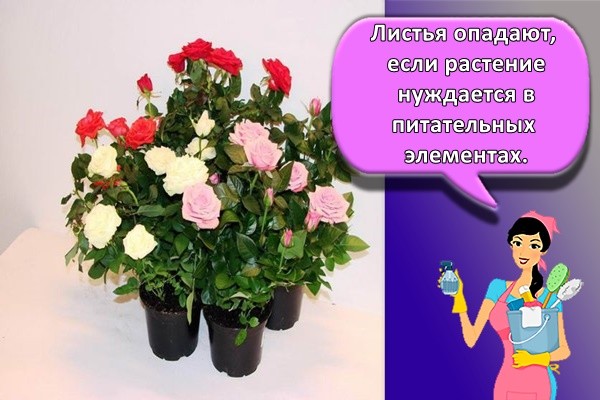
Yellowing of leaves
Pest attacks, excessive watering, a deficiency of useful elements in the soil, and rotting of roots lead to yellowing of the leaves.
Leaves and flowers wither
These problems are associated with exposure to drafts, the use of cold water for irrigation, fungal infections, and pest attacks.
Diseases and pests
Quite often, the Cordana rose is faced with the development of dangerous diseases and pest attacks.
Mealybug
When infected with a mealybug, lumps appear in the leaf axils that resemble cotton wool. Insecticides help to cope with parasites.
Shield
When these insects attack, brown cakes appear on the veins of the leaves, which resemble drops of wax. It is recommended to assemble the shield by hand.
Whitefly
When attacked by a whitefly, small white capsules appear on the back of the leaves. In this case, the bush must be treated with insecticides.
Aphid
Aphids enter the plant from soil or air. In this case, the leaves are curled and the shoots are deformed. A decoction of pepper or tomato tops will help to cope with the problem.
Spider mite
These parasites settle on the underside of the leaves. Their reproduction is observed in conditions of increased dry air. Coping with ticks is very difficult. Humidification of the air and spraying of the crop will help to avoid their appearance.
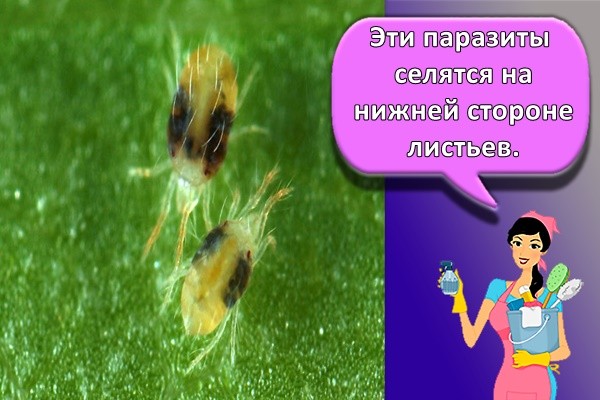
Mottling
This is a fungal infection that is accompanied by the formation of spots on the leaves. As a result, the bushes stop developing. Copper or sulfur-based products help to cope with the disease.
Powdery mildew
With this disease, the leaves are covered with a white bloom. Treatment of the bush with soapy water helps to cope with the pathology.
Varieties
Mini-rose "Cordana" has several sub-varieties intended for both home and border growing.
- "Mix" is the smallest representative of the species and is only suitable for indoor breeding. It is considered the most capricious of all sub-varieties, as it requires the creation of especially favorable conditions. The plant owes its name to the variety of colors, which is why it has become very popular among amateur flower growers.
- "Lux Denmark" is distinguished by compact bushes and delicate purple, with an admixture of raspberry shades, flowers.
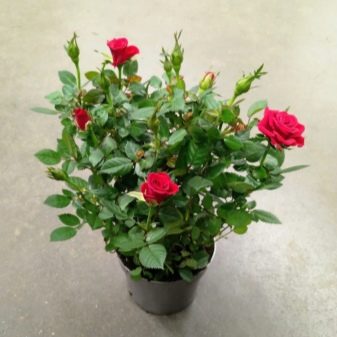
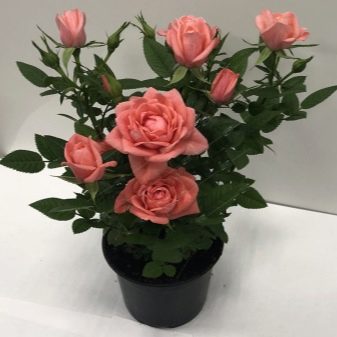
- "Gigi" is characterized by red and white flowers, with proper care it can reach a height of over 30 cm.
- "Amore" is intended for outdoor cultivation and has tall bushes that grow up to 40 cm.
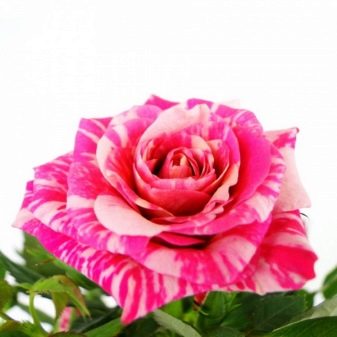

- Apollo has pale yellow flowers and can bloom for up to 20 weeks.
- "Pasadena" is a classic rose in miniature, and is characterized by increased resistance to fungal diseases.
- "Caliber" is characterized by miniature red flowers 2-3 cm in size, which bloom until the onset of cold weather.
Transplant and reproduction
For the first time, the rose should be transplanted immediately after purchase. This is necessary for the plant to take root faster in a new place. The procedure is carried out by the transshipment method, moving the plant into a new container along with an earthen lump. To make it easier to remove the flower from the old pot, the soil is watered abundantly. When the soil is wet, you can easily remove the plant without damaging its roots and earthy clod (Figure 5).
 Figure 5. Transfer is carried out by the transshipment method
Figure 5. Transfer is carried out by the transshipment method
You can also plant a rose at home using propagation by cuttings. To do this, the plant must first be cut, having prepared branches, no more than 2-3 mm thick and with several buds. The lower part of the shoot must be cleaned of leaves.
 Figure 6. For propagation, the grafting method is usually used
Figure 6. For propagation, the grafting method is usually used
Cutting is one of the simplest and most effective breeding methods. To do this, the lower cut is made at an angle of 45 degrees and lowered into the water. The first roots will appear in a few weeks (Figure 6).
After that, the young seedling can be transplanted into a separate pot. The cuttings root quickly enough, build up the green mass and are covered with the first buds.
Choice of place and conditions of detention

Of course, roses love a lighted and well-ventilated arrangement. But what to do if there is only one window sill at home, where in this case you can place the rose and how to properly care for it in order to achieve flowering and growth of the bush, all this is described below.
Lighting and location
It is necessary to put the pot with the variety "Mix" in a brightly lit place, but it is necessary to protect it from direct rays. If there is not enough light for the plant, it will stretch upward, while the stems will be thin and practically without leaves. You can compensate for the lack of lighting with a fluorescent lamp, this is a prerequisite during the period of plant growth.
In order for the crown of the plant to develop normally, the flower must periodically be turned in different directions towards the light. In summer, such a rose can be taken out onto the balcony and placed on its windowsill.
Temperature
In warm weather, the optimal indicator will be 25 degrees, and in winter you need to make sure that the temperature does not fall below 15 degrees. You need to install pots with a rose away from heating appliances so that the air around them is not dry. It is necessary to ventilate the room more often, take the plant out to the balcony or veranda. The plant does not tolerate drafts, therefore it should be protected from them.
Air
Humidity must be maintained at the proper level, especially during the adaptation period and the time of bud formation. If you do not constantly spray the plant, then its leaves will turn yellow. It is allowed to spray the buds, just not with a lot of water. Spraying should not be carried out under the rays of the sun, otherwise burns will appear on the leaves, it is best to carry out this procedure in the morning.
Soil and pot
Rose "Mix" is difficult to grow on your own, so it appears in the house from the store. When they bring her home, they give her time to adapt. At least 1 week, but knowing that for abundant flowering during industrial cultivation of plants, special additives are added to them, which is why you need not delay with its transplant. The pot should be chosen 2-3 cm larger than the previous one.
The soil must be prepared from turf and humus, taken in 4 parts and 1 part of sand is added to them. When the plant is planted in the ground, it is necessary to add fertilizer in granules to it.
For those who do not want to take risks, it is better to buy ready-made soil mixture.

Roses need to be treated more carefully than all other indoor flowers, without proper attention they can dry out and it will be impossible to revive them.
Watering
All types of "Mix" love regular irrigation, it is impossible for the soil in the pot to dry out. Watering should be carried out only with settled water, in winter it is necessary to water less often.
Top dressing
After transplanting, top dressing can be carried out after 30 days. It can be a mullein solution or a ready-made mineral mixture; a special liquid fertilizer is used for the leaves of a room rose. Top dressing is carried out after watering, preferably in the evening.
Loosening, mulching
Each time the next day after watering, the top layer of soil in the pot must be loosened. For these purposes, an ordinary fork is suitable; after such a process, the root system of the plant will be able to receive sufficient oxygen.
Pinching, pinching, pruning
Some types of miniature roses do not need pruning, such exceptions include Mini Mix. For the same plants that need crown formation, the process is carried out in the spring or autumn.
Pick up a sharp tool, it is better to buy a pruner designed for small diameter branches. First, dried and diseased stems are cut off, and then those that grow in the depths of the bush are eliminated.
Transfer

After the purchase, the Mix rose is not transplanted immediately, it is advisable to wait 10 days. Then the procedure for transplanting it from a store pot into a pre-prepared one is as follows:
- The pot with the plant is tilted a little and all sides are tapped.
- Gently pull on the stems, while trying not to damage the horse system, if it is not pulled, then you need to loosen the ground around the pot a little.
- Excess soil can be chickened out a little, but the roots cannot be completely freed from the ground.
- At first, expanded clay is poured into a new pot to create a drainage layer, and then it is filled with half-prepared soil, and a deepening is made in it.
- They install a bush right in the middle of the container and cover it from all sides with the rest of the earth. In this case, the mixture should be compacted on all sides of the bush, and then water it a little or spray the leaves.
Correct care
The purchased Cordana rose requires special treatment, therefore it is necessary to provide it with proper care. Immediately after the purchase, you may notice that the flower does not feel very good: being weakened, the rose can even shed its leaves. However, if you immediately begin to properly care for her, after a few weeks she will adapt to the new conditions and fully recover.
The first thing to do when purchasing this plant is to gently rinse your beauty under a warm shower and treat it with a special pest medicine. This will kill the parasites, if any.
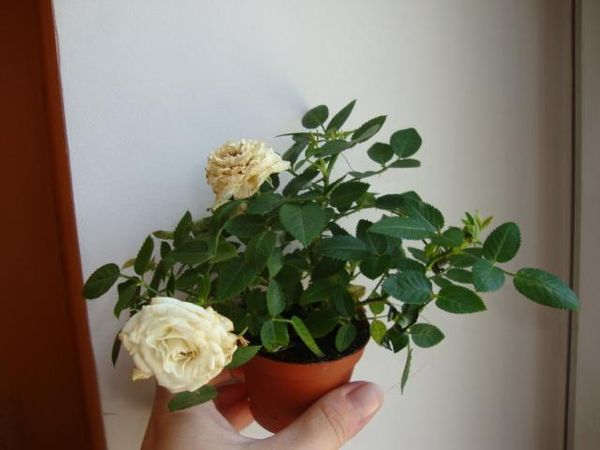
It is important to provide your beauty with the good lighting she needs. It is best to place it near the southern windows, but when the peak of solar activity comes, do not forget to put it in the shade, otherwise you will not avoid sunburn.
The flower feels most comfortable at a temperature of 15-20 degrees. It is also important to ensure the supply of fresh air by ventilating the room on time. But do not put the rose in a draft - this can seriously harm it. In summer, the plant can be kept in a pot even on the balcony.
Rose Cordana loves moisture, so you need to water it often, making sure that the earth does not dry out. But it is also not recommended to flood the plant - the roots can rot. Excess water in the pan is also not needed - drain it if it remains. The best option is to water the rose as soon as the topsoil dries up. After watering, you need to slightly loosen the soil so that the roots of the plant can access oxygen. Some recommend spraying the plant with a spray bottle, but many growers claim that this contributes to the appearance of fungal diseases.
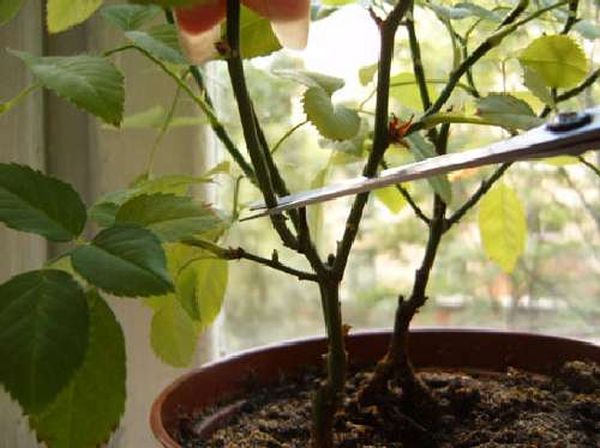
Prevention of diseases and pests
Miniature roses are susceptible to pest attacks and get sick quite often.
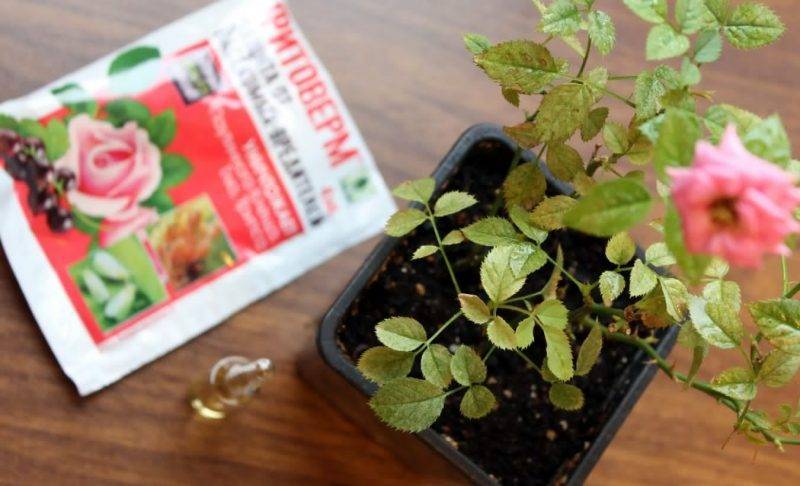
The reasons for this are:
- the use of planting soil without its preliminary disinfection;
- gross violations in care;
- nearby affected plants.
Most often, indoor roses suffer from fungal infections that develop in conditions of high soil moisture in combination with very warm indoor air and thickened shoots.
Fungal diseases are manifested:
- darkening of the lower part of the shoot (black rot);
- the formation of dark spots on the surface of the leaves (mottling);
- the appearance of a white or gray coating on the leaves (powdery mildew and downy mildew).
Reducing the risk of developing fungal infections will allow preventive soil and ground treatment with biological fungicides (Fitosporin, Mikosan-V, Trichoderm) and immunomodulators (Epin, Zircon, Novosil).
Indoor roses suffer from invasions of spider mites, which rapidly develop in dry and stagnant air.
It is not easy to save an infected plant, which is why preventive measures are so important:
- increase in air humidity;
- frequent ventilation of the room, excluding the formation of drafts;
- competent pedantic care of flowers;
- preventive treatment of plants with acaricides (Fitoverm, Akarin, Agravertin) and drugs that increase immunity.
With proper care, started immediately after purchase, the Cordana rose will delight with flowering for a long time, decorating an interior or flower garden with its presence.
Diseases and pests of a room rose
Indoor rose is sensitive to powdery mildew. It leaves a white coating on foliage and stems. To eliminate the problem, the affected plant elements should be removed and treated with a fungicide. Fundazol, Topaz, Fitosporin are suitable.
Aphids or spider mites can harm the health of roses. When a red spider mite attacks, a cobweb appears on the shoots and the youngest leaves dry out. If a small number of insects are detected, rinsing the leaves with soapy water can be dispensed with. In case of massive damage to the plant by pests, you will have to resort to insecticides - Aktellik, Fitoverma, Nurrel-D. You should not try to remove a spider mite with folk remedies - this will lead to the death of the plant.
What other problems can lead to room rose diseases?
- lack of nitrogen in the soil - the leaves become pale, the veins turn yellow first;
- with insufficient lighting, irregularity or lack of timely pruning, drafts, rare watering - there is no flowering;
- if the temperature is too high, irregular watering and too much lighting, the leaves turn yellow and fall off;
- with excessive watering, the shoots rot.
Plant care outdoors and at home
After the rose has passed the adaptation period and planting, we can talk about the rules for caring for it. The optimal placement was mentioned above - you need a sunny side and a minimum of draft. The next stage of care is watering, which the roses really need. Ideally they should be watered as the topsoil dries. It is easy to check the need for moisture - just press on the ground with your finger: if water is released, watering is not required. Be sure to drain the water from the pallet!
Note! Most flower growers have a negative attitude towards spraying roses, this method of moisturizing can lead to the appearance of a fungus. Therefore, it is better to water the flower as usual, through the ground, using water at room temperature.

Roses of Cordana need to be carefully transplanted, trying not to damage the root.
Top dressing during the flowering period is carried out once a week; organic fertilizers are suitable. In the rest of the period, you can reduce the frequency to 2 times a month. Before flowering, in spring, the rose needs nitrogen-containing fertilizers. In late autumn, the plant stops blooming (the buds stop appearing by the end of October), you can prune.All weak and damaged shoots are removed. You also need to remove wilted buds, otherwise the plant will start spending energy on the formation of seeds. Even healthy shoots need to be shortened to 2-4 lower buds. The more powerful the shoots, the better the flower will endure the winter.
Important! No need to prune new shoots growing from the root. This is not a growth, which garden varieties are susceptible to, but, on the contrary, a sign of the good health of a rose.
After that, you need to gradually reduce the frequency of watering and feeding; in winter, fertilizers are not used at all. Watering is carried out 1-2 times a week so that the plant does not dry out. For wintering, it is best to choose a cold place - a basement or balcony, where the temperature is kept within the 5-12 ° C range. Hypothermia should not be allowed. As soon as winter passes, you can return the flower to its usual place.


